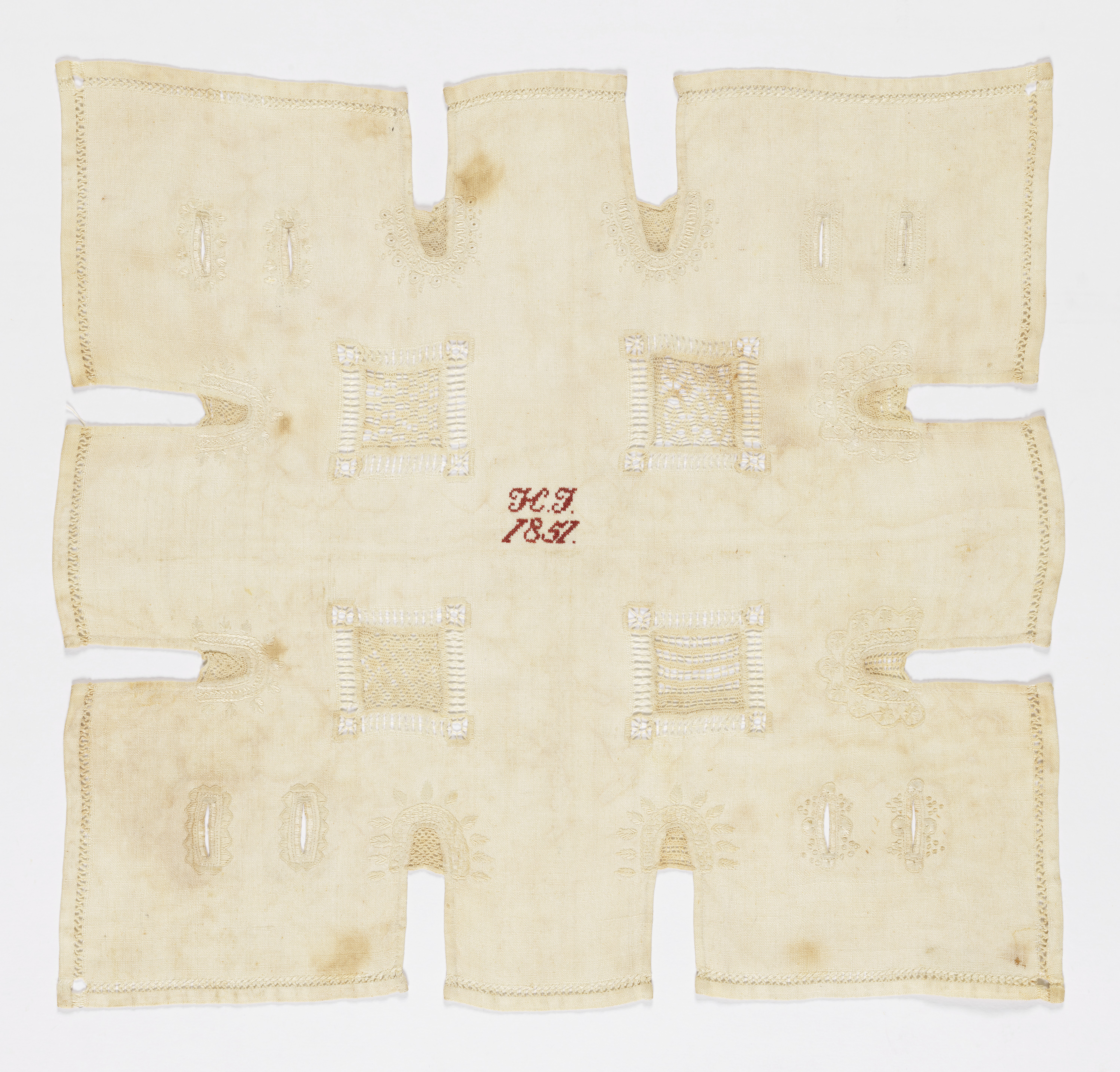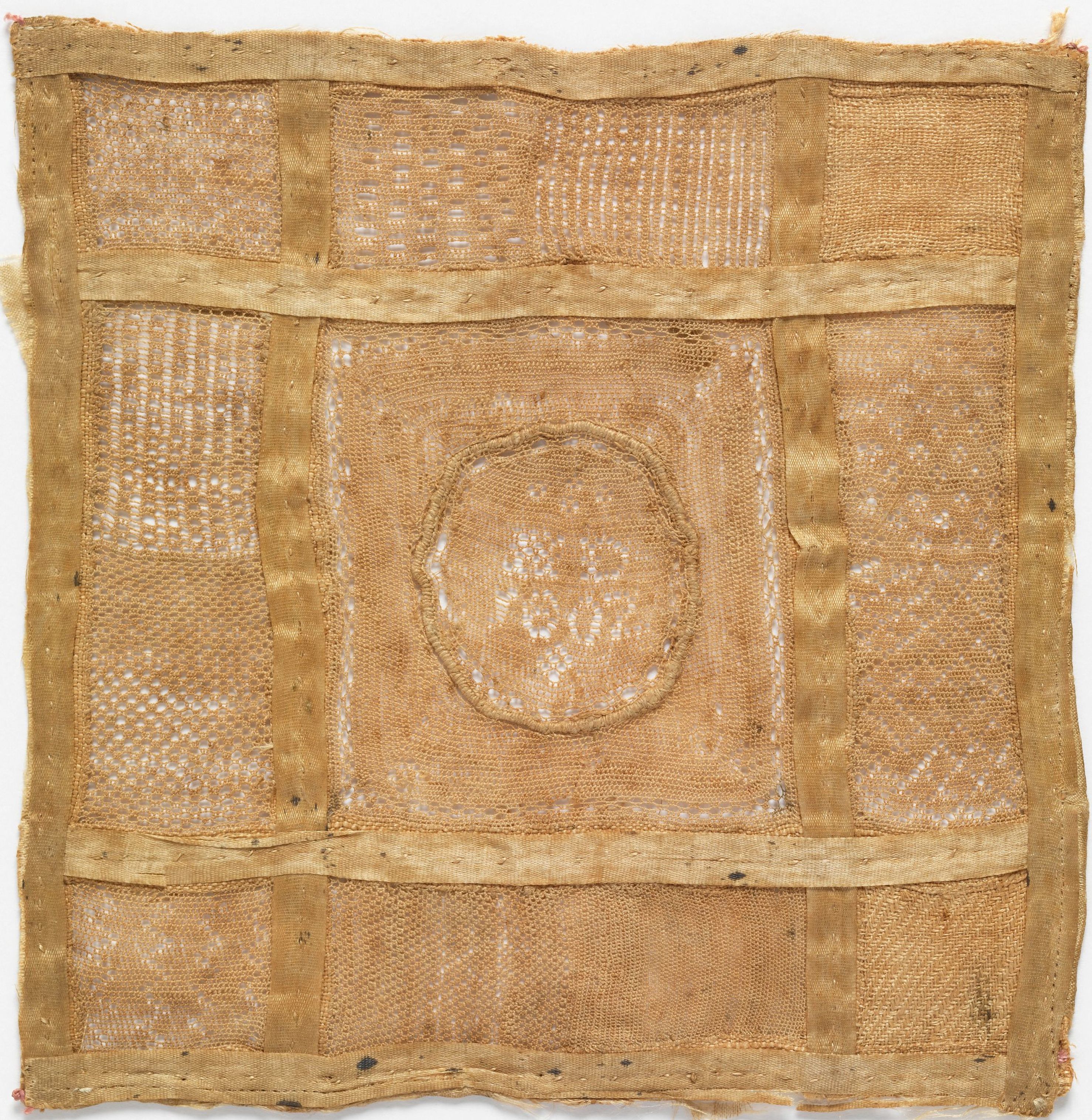A LACE FOR BABIES Hollie point is sometimes called holy point, which hints at its most common use: as a religious decoration on baby clothes. The motifs are religious: the dove of the Holy Spirit, chalices and lambs, and a common motif of a flower in a pot, which is thought to be the lily of the annunciation. (For obvious reasons, the parts of the Christian story that relate to Jesus' birth and early life are preferred to the cross, the empty tomb, or final judgement!) It's impossible to say whether the makers regarded these images as talismans that actually protected their babies and brought good luck, or whether they were simply celebrating the miracle of birth with references to the miracle of Jesus' birth. We don't know what they believed, only what they made and left behind, which is why we must be careful not to judge people based only on what we see on the outside. One person's magic charm may be another's pretty picture. METHODHere's an English hollie point sampler. The foundational tapes were stitched to a base, and the needlelace stitches made in the empty spots, before the whole thing was removed from the base. The central square has the maker's initials (HD) and the year (1802). The top right corner and bottom right corner are darning/needle weaving, but all the other boxes are variations of Hollie point.
The Textile Research Center shows another example, a baby bonnet with the words "Thos Fry agedd 1 year 1776 Wroham Kent" written in the voided areas. Here it is at the V&A, accession number 146 to D-1907. Hollie point is not my favorite needlelace--I am not drawn to its pixelated, blocky style--but it is sweet because of its use and the care invested in its making. Other laces were products of industry, hollie point was the product of the home. No matter how technically fine and objectively beautiful a piece of Alençon lace (for instance) may be, it lacks the mother-made charm of a hollie sampler proudly declaring that Thomas Fry arrived at his first birthday.
2 Comments
The Sister
7/27/2018 06:10:06 am
Awww, you're just a softie. :-x
Reply
Cynthia Juel
3/25/2021 08:22:10 am
Personally, I think that Hollie Point gets its name from the simple fact that the pattern is made up of 'wee hollies'.
Reply
Leave a Reply. |
Karen Roy
Quilting, dressmaking, and history plied with the needle... Sites I EnjoyThe Quilt Index Categories
All
Archives
March 2024
|


 RSS Feed
RSS Feed